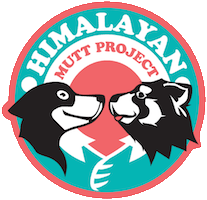Kelvin Chen for Mutts and Mountains
- torvaanser
- Jun 3, 2015
- 2 min read

Kelvin shares our belief that controlling the dog population is necessary to help preserve the Himalayan environment, especially if dogs are impacting the ecology of native wildlife.
Kelvin Chen started backpacking in the early 80’s and made his first visit to Kathmandu in 1987 during his university holidays. He shares, “I made the trip on my own and trekked solo to Annapurna Base Camp, as well as did a 3-day rafting trip.”
“After my month-long trekking/rafting trip in 1987, I was captivated and knew I had return. On that trip, I experienced great Himalayan hospitality and made friends from all over world, many of which I am still in touch with today.”

Kelvin returned to Nepal five more times and eventually founded an adventure travel company with which he has led both trekking and nature tours. Of his subsequent trips to Nepal, Kelvin says he was raptured by the “sheer wilderness and unpredictability” of the landscape.
With a desire to give something back to the country, Kelvin returned in 2000 as a leader of a Nepal Community Project to build a school and equip a village in Pokhara District. His team raised funds, collected donations, and took Nepali lessons from a Gurkha soldier.

Along his treks, Kelvin has encountered many exotic Himalayan wildlife, mainly birds like buzzards, vultures, hoopoes (above photo), as well as pika, a small alpine relative of the rabbit. Appreciating nature, Kelvin believes, “is beneficial to my, and everyone’s soul.”
When we spoke to Kelvin about mutts he had noticed during his treks, he admits, “mutts are not a species which come to mind during treks. Rather it is goats, donkeys, yaks, chickens, sheep etc.” Mutts tend to fall into our periphery when trekking in the Himalaya. Simply because there are so many of them that we fail to take notice. “When I came home to look back at my photo albums, I'll find more than one picture of a mutt.”

Through his treks in the Himalaya, Kelvin learned that many large breeds, like Tibetan Mastiffs, are kept as guard dogs. “They can give you a shock when they suddenly rush at you, and you just hope their steel chain does not break.”
That being said of dogs with owners, Kelvin notes that, “strays can be a danger if they are hungry, injured or behaving in a pack. Humans have to be responsible for dogs; we domesticated them for our own needs, so we need to manage them.”
“We need to be responsible for our effect on the earth. If it is somewhere we like to visit, all the more we have to give back to what the place has given to us. We should not merely be tourists exploiting a less-developed nation.”
I support HMP because I love the Himalaya and mutts. And if dogs, which are domesticated by humans, are affecting the fragile environment, then humans have to be responsible. All the more if there is something we can do or if it’s within our control.
The Himalayan Mutt Project is very commendable for what it is trying to do and has done given its resources. Both mountains and dogs bring a smile and sense of peace to humans so we should look after both.”
































Comments